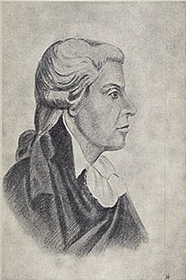Felice Fontana
Abbé Gasparo Ferdinando Felice Fontana (15 April 1730[1] – 9 March 1805) was an Italian polymath who contributed to experimental studies in physiology, toxicology, and physics.
When his father moved to Villa Lagarina, Fontana studied in Rovereto under Girolamo Tartarotti and Giambattista Graser.
In 1755, his older brother Giovanni Pietro, a priest died, leaving half of his wealth and inheritance to Felice if he took up a religious position.
Although Partini was only a few months younger than Fontana, this tutorship lasted nearly a decade and led to a move to Florence.
Fontana also became a member of the Istituto Marsiliano delle Scienze when he moved to Bologna and here he interacted with many of the scientists of the period.
Around 1755-57 he collaborated with Leopoldo Marc Antonio Caldani on experiments to examine the concept of Hallerian irritability.
He then went to Pisa where recommendations from his mathematician brother Gregorio and Carlo Firmian led to a formal position as chair of logic in 1765.
The work took a toll on his health and he was granted permission by the Grand Duke to travel to France and England.
Already in 1775, he published a treatise, 'Ricerche fisiche sopra l'aria fissa', on Carbon dioxide (opposing to, among others, the theory of Torbern Bergman that it was acid in itself) and 1779-1780 sees his seminal research on curare.



